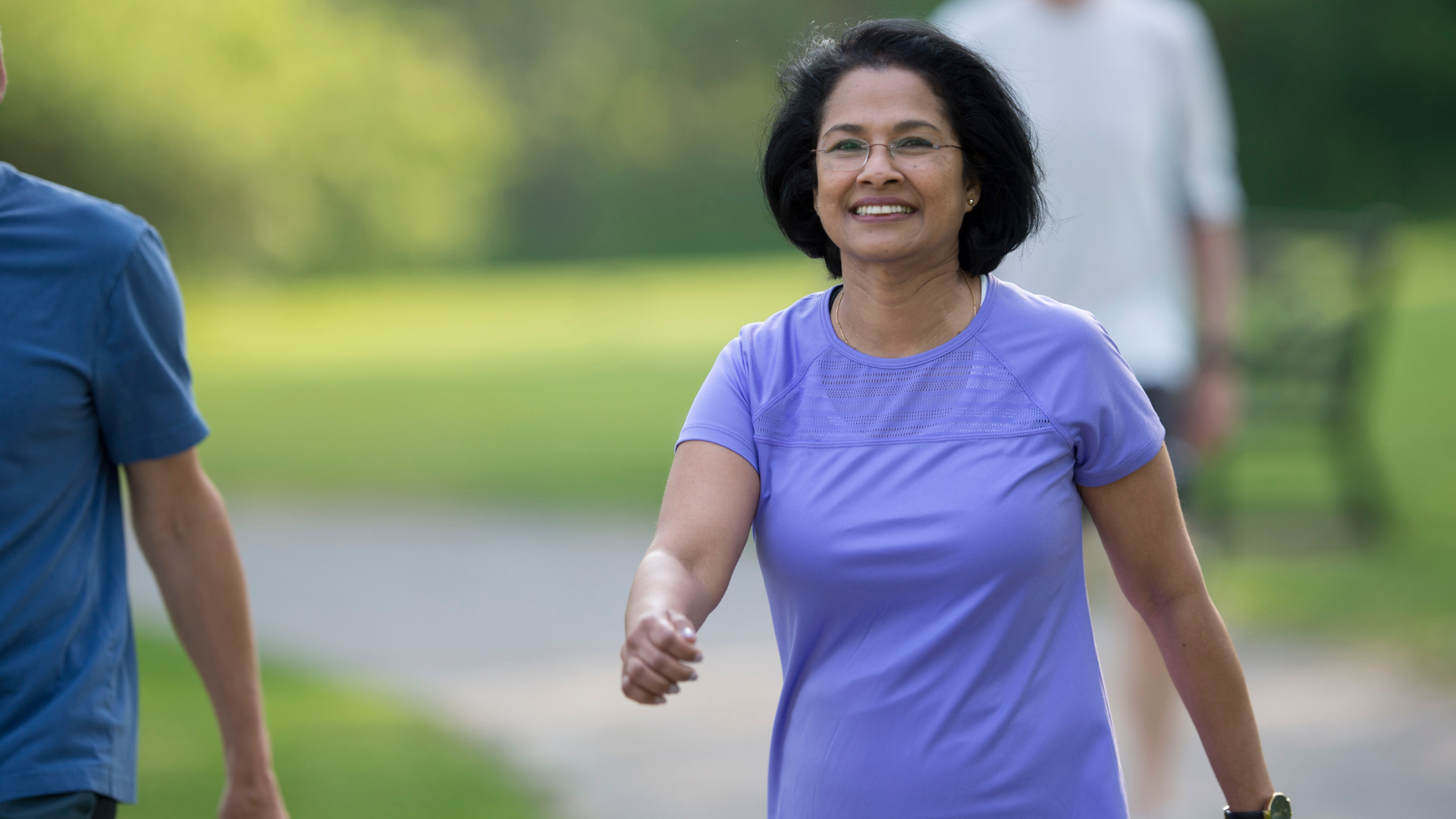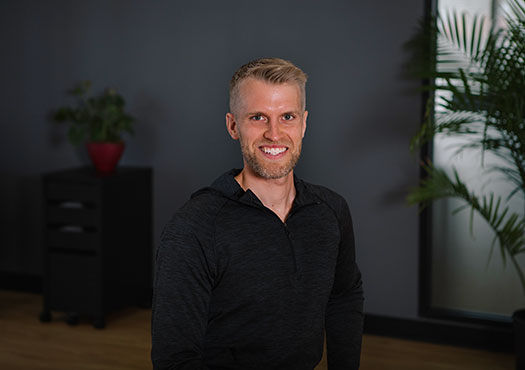Regular exercise is one of the most important things older adults can do to maintain good health and independence. Yet, it is clear that as an aging population we are not getting the recommended amount of exercise to reap those benefits. As a registered physiotherapist, I need to know how to motivate older adults to exercise in a rehabilitation setting. I also try to encourage my clients to change their exercise behaviours long term and stay active as they age.
To better understand why so many people, especially older adults, continue to avoid something that is so clearly beneficial, we will look at some of the current research around motivation and physical activity. I will also provide tips on how to keep older adults engaged in regular physical activity based on these studies as well as my own professional experience.
Physical Activity Guidelines for Older Adults
To achieve health benefits, and improve functional abilities, adults aged 65 years and older should accumulate at least 150 min weekly (about 30 min 5 days a week) of moderate to vigorous intensity aerobic exercise, maintaining bouts of 10 minutes or more.[i] However, in 2018, Canadians over 65 self-reported getting an average of only 37.3 minutes of physical activity a week.[ii]
It is also beneficial to add muscle and bone strengthening activities using major muscle groups, at least 2 days per week.[iii] Strength training has been shown to preserve bone density, reduce the risk of osteoporosis and arthritis, as well as enhance psychological well being.[iv] Yet only 10–12% of persons 65 and older say they do strengthening exercises more than twice per week.
Regular physical activity can help older persons reduce their risk of chronic disease, manage illnesses they already have, function better physically and mentally, avoid injuries such as falls, and live longer independently.[v]
Tips to Motivate Older Adults to Exercise
One thing that became very clear to me in reading the latest research around physical activity is that we have not found one consistent way to increase motivation and engagement of exercise in older adults quite yet. However, there are a number of methods and ideas that can make difference. I have summarized them here:
1. Education, advice and follow-ups about the benefits of exercise
Although the question of how to motivate someone to exercise is unique to each individual, there is evidence that brief advice by a healthcare professional can motivate older adults to start walking, at least in the short term.
After an initial conversation during a clinic visit about physical activity, continued mention at subsequent appointments, or telephone booster calls, could help keep patients active over the long term.[vi]
I have recognized this benefit with a lot of my physiotherapy clients. Having a physiotherapy appointment on the calendar will motivate clients to complete their exercise programs until that upcoming appointment.
During the appointment, I can tell clients are excited to tell me about how well they kept up with their program or we can discuss ways in which they didn’t reach their goals and how we can work to change certain aspects of their program.
Simply knowing that someone else cares about their activity level is such a big motivation boost!
2. Pedometers and other devices to help track exercise
The benefits of walking are numerous but it is important that walking exercise is done at a ‘moderate’ level of effort. A leisurely stroll or window shopping is insufficient. Moderate-intensity walking can be described as brisk or being able to talk while walking but not sing.
Pedometers can be helpful motivators and taking about 3,000 steps in a half-hour could also help patients gauge that they are moving at a sufficient pace.[vii]
Especially since the recent increase in the use of wearable tracking devices, I have noticed that a lot of older clients, family member, and friends alike have started taking more interest in how much activity they are doing. The simple feedback on “how many steps did I take today?” is easy for people to understand and monitor, and therefore acts as a great motivator for day-to-day activity levels and goal-setting.
3. Establishing appropriate goals for the individual
In a study by Resnick and Spellbring in 2021, they found that establishing appropriate goals may be useful to improve adherence to a regular exercise program. Goal setting is an action plan designed to motivate and guide a person toward a specific goal. It can help to focus attention and give direction to how a person is performing relative to their goal. Setting short- and long-term goals can help to increase self confidence, enhance motivation, and improve performance.
One example of goal-setting with my older adult client population happened recently with the change to warmer weather. This client is an avid gardener, but due to a recent stroke he has been watching from his window as his wife has been completing the gardening this spring. Determined not to sit on the sidelines any longer, this client made a goal of walking around his house and into the garden by the end of the summer.
Having such a concrete, attainable, and specific goal has dramatically increased the client’s engagement in his exercises and walking practice, as we work towards the end goal of being able to walk outside and into the garden.
4. Engaging in activities that are pleasant to that individual
In the same study by Resnick and Spellbring in 2021, they found that decreasing unpleasant and increasing pleasant sensations associated with exercise may be useful to improve adherence to a regular exercise program.
When older adults exercise, they most often walk because it is both practical, can be very enjoyable and beneficial. However, although walking is very beneficial in many ways, it does not provide the same strength, coordination, and balance benefits of many other activities.
Finding an activity that challenges these other areas is a great addition to a walking program, sports such as tennis, golf, pickle ball and swimming for instance. Outside of the sports world, activities such as Tai Chi, pool therapy/exercise, yoga, and Pilates are programs that usually involve groups of people which help to improve enjoyment and adherence.
5. Starting gradually and increasing intensity of activities
The Canadian Society for Exercise Physiology (CSEP) recently released Canada’s first ever ‘24-Hour Movement Guidelines for Adults’ to offer direction on what a healthy 24-hour period should look like for adults aged 65 years and older.
They report that “all types of movement matter, and a balance is required for best health. Replacing sedentary behaviour with additional physical activity and trading light physical activity for more moderate to vigorous physical activity, while preserving sufficient sleep, can provide greater health benefits. Taking small steps and making healthy movement choices throughout the day can make a big impact!”
For a lot of people and especially older adults who have minimal experience with structured exercise programs, thinking about starting to exercise can be very overwhelming. For this population I find it is most beneficial to start with very light activity and focusing on consistency of completing the activity, before moving to more vigorous activity.
It is much easier to build good habits like exercise when it doesn’t feel too burdensome to complete and when you have options. For example, rather than asking someone who is sedentary to go out for a 20-30 minute walk every day will likely not result in more than a few days of adherence due to obstacles such as scheduling, dressing, weather, or boredom.
However, if you asked that same person complete one physical activity every day such as going up and down their stairs a few times in a row, riding their stationary bike, or going for a walk, the chances of them completing one of these options is much higher since it is easier to fit into their day and they feel they have some choice based on how they are feeling.
6. Building exercise into your regular daily activities
Even if you are finding it hard to complete these lighter activities regularly as mentioned above, there are still ways to increase your activity level without structured times to exercise. There are many things we do throughout the day out of convenience, that with slight changes can turn into movement and exercise. A few examples:
- Instead of waiting in your car in the drive thru line-up (sitting…), you can park your car and walk into the line-up inside (standing!)
- Parking further away from your destination to get an extra few minutes of walking
- Taking the stairs instead of the elevator
When you think about it, as humans, we are meant to move throughout the day not just during a planned 30 minutes. Incorporating small changes into our daily routine that reduce sedentariness can make a real impact on our activity levels and health.
Exercise Programming for Older Adults
We know that levels of physical inactivity and sedentary living among Canadians are critical issues in Canada. Staying active can be more difficult as an older adult because there are fewer organized physical activities and increased fear of injuries. It is critical that we find ways to motivate older adults to exercise to prevent a major healthcare crisis.
A registered physiotherapist or exercise professional can help by educating seniors on the benefits of specific exercise. Creating a personalized, goal-based exercise program that fits their daily routine helps seniors build their physical abilities at a comfortable, enjoyable pace. In addition, fall injury prevention programs can help build their confidence.
References
[i] https://csep.ca/CMFiles/Guidelines/CSEP_PAGuidelines_0-65plus_en.pdf
[ii] https://www150.statcan.gc.ca/t1/tbl1/en/tv.action?pid=1310009613
[iii]https://csep.ca/CMFiles/Guidelines/CSEP_PAGuidelines_0-65plus_en.pdf
[iv] American Journal of Preventive Medicine, Volume 25, Issue 3, Supplement 2, October 2003, Pages 141-149
[v] Chodzko-Zajko WJPD, Fiatarone Singh MA, Minson CT, Nigg CR, Salem GJ, Skinner JS. American college of sports medicine position stand: exercise and physical activity for older adults. Med Sci Sports Exerc 2009; 41: 1510–30.
[vi] Bennett JA & Winters-Stone K. Motivating older adults to exercise: what works? Age and Ageing 2011; 40: 148-149.
[vii] Bennett JA & Winters-Stone K. Motivating older adults to exercise: what works? Age and Ageing 2011; 40: 148-149.
Written by

















